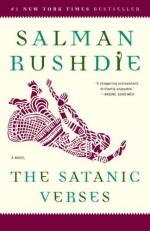|
This section contains 211 words (approx. 1 page at 400 words per page) |

|
As in Midnight's Children (1981) and Shame (1983), Rushdie resorts to a variety of narrative techniques to present his story. At times he parodies the excessive, artificial, melodramatic, and garish aspects of popular Indian films; on other occasions he adopts the selfreflexive strategies of the metafictionist.
Characteristically, The Satanic Verses blends straightforward narrative with authorial commentary. Gibreel's visions are presented as parables or allegories and have the feel of dreams, while the frame story of the Indian star and Saladin is presented with a mixture of fantasy and realism. Readers who are familiar with the style of Rushdie's earlier novels will not be surprised to find in The Satanic Verses the same kind of slap-stick, comic excess, and satiric energy that he has previously used. But they may be unprepared for the simple realism of this novel's ending and the pathos of the deathbed scene.
Linguistically, Rushdie once again shows...
|
This section contains 211 words (approx. 1 page at 400 words per page) |

|




